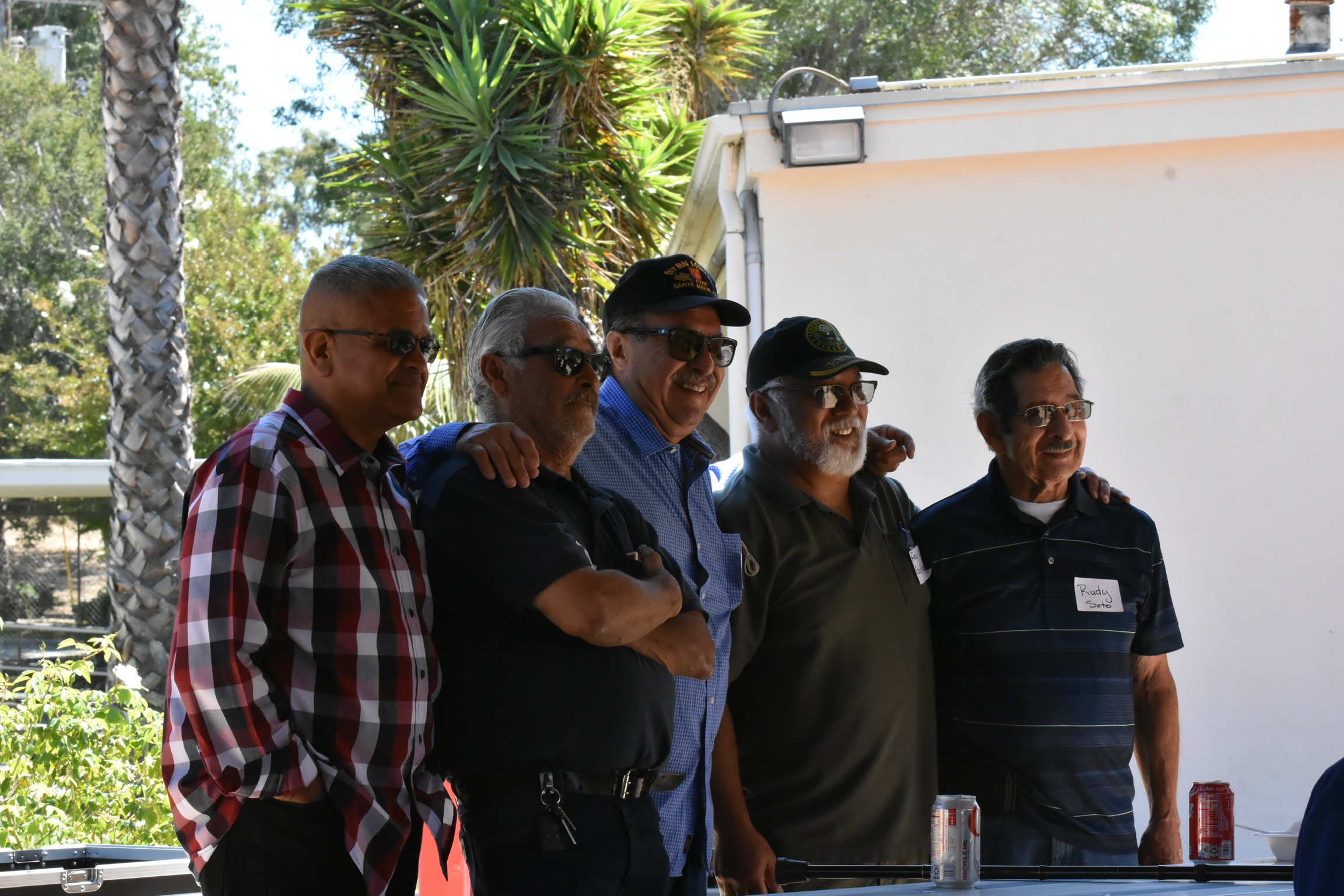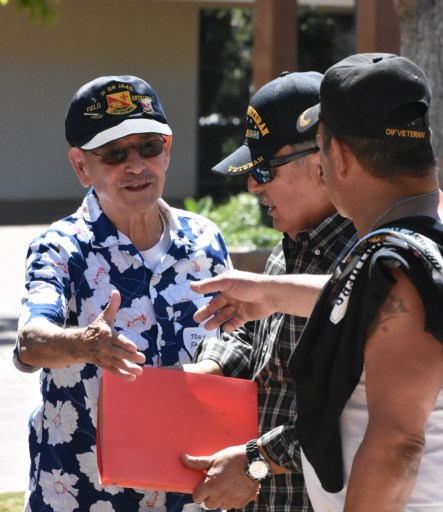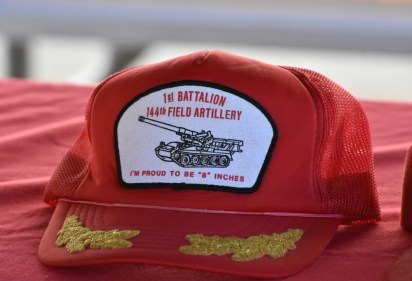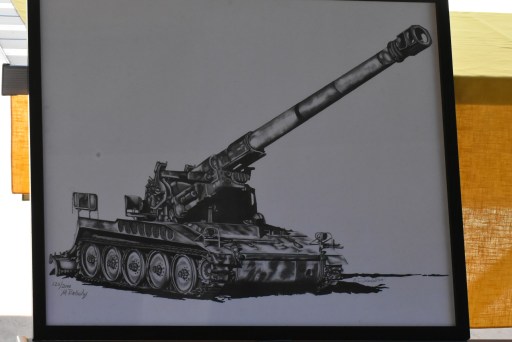A Reunion of the 144th
Veterans of a National Guard Artillery Battalion Reunite

To celebrate our fellowship and our mission, the 1/144 Field Artillery Battalion, California National Guard veterans held a reunion BBQ at Bishop Diego High School on 27 August 2022. It marked the 105th anniversary of the founding of the first local National Guard unit in Santa Barbara in 1917.
The Army National Guard predates the founding of the nation, as the Massachusetts Bay Colony mustered the first regiments in 1636 in Salem. Militias formed the bulk of the nation’s forces in the Revolution. Despite uneven performance on the battlefield, the Founding Fathers preferred them as they believed large standing armies inimicable to a republic’s long-term prosperity.

The California Militia formed in 1849 as territorial militias. During the Civil War, California militias actively supported both sides with recruits sent east and various operations in California and the west. They also jockeyed for ultimate control of California, with Unionists ultimately winning. The modern California National Guard dates from the Militia Act of 1903 in reaction to national struggles mustering troops for the Spanish–American War. The act codified regulations for all American militias, standardizing equipment and training in line with Regular Army units as well as how they would be federalized for national service.
After the Santa Barbara National Guard was founded, in 1938, the Work Projects Administration built a dedicated unit Armory at 700 East Canon Perdido as a joint project between the City of Santa Barbara and the California Army National Guard. Units assigned to the Armory received various designations and reorganizations many times over the decades to keep pace with the evolving military structure. After the Korean War and release from active duty, the 1/144 Field Artillery Battalion became the dedicated Santa Barbara unit and remained so until recently.
The 1/144 Field Artillery Battalion employed some of the U.S. Army’s last self-propelled M110A2 Howitzers, which fired enormous 8-inch, 200-pound projectiles. The Army determined its Cold War mission would be to deploy to support the defense of the Fulda Gap in Germany and trained accordingly. Santa Barbara–based National Guardsmen deployed from there in WW II, Korea, Vietnam, Panama, Desert Storm, Operation Iraqi Freedom, and Operation Enduring Freedom. Santa Barbara Guardsmen deployed to Los Angeles for the 1965 Watts Riots, 1970 Isla Vista Riots, and 1992 Rodney King Riots. In addition, Guardsmen supported emergency relief in numerous fires such as the 1964 Coyote Fire, the Romero Fire, and the 1985 Sycamore Canyon Fire. The unit played a major part supporting emergency efforts in the disastrous 1969 Riverside and San Bernardino county floods. Disciplined troops with heavy trucks and tents proved irreplaceable assets for moving and sheltering displaced civilians and transporting food, medical supplies, and emergency workers.

Until military service fell out of favor in Santa Barbara, the troops were all native sons. Guardsmen of the 1/144 came from all parts of the community — grocery clerks, office managers, police officers, laborers, college students, hotel clerks, bureaucrats, and firefighters. Many previously served in the Army, Air Force, Navy, and Marine Corps. The Santa Barbara Armory is named after Major General Ott, once the 40th California Army National Guard Division Commander, WW II vet, Korean War vet, lifelong Santa Barbara native, and local business owner.
While Santa Barbara no longer supports a National Guard unit, Guardsmen still support state emergency efforts nationwide. California Army National Guard engineers from the 315th Vertical Construction Company assisted searching for survivors in the 2018 Montecito mud slides. National Guard units deployed to assist with the coronavirus pandemic to include the California Air National Guard 146th Airlift Wing assisting the Santa Barbara Foodbank distribute food to needy families. National Guardsmen supported local municipalities nationwide during the 2020 riots.
President John F. Kennedy once said, “Ask not what your country can do for you — ask what you can do for your country.” But early in our nation’s history, nobody had to ask. Every able-bodied man was considered part of the militia. They considered it their duty to serve and were proud to. Early militia provided their own arms and equipment and weren’t even paid until the 20th century.

This is the origin of the 2nd Amendment specification that “A well regulated Militia, being necessary to the security of a free State, the right of the people to keep and bear Arms, shall not be infringed.” A militia needs “regulation” to be sure. But a militia without modern military arms is as useful as a Navy with a fine book of regulations but no ships.
As late as WW I some of the most elite U.S. Army divisions were National Guard divisions. Despite shrinking numbers and marginalization by the Regular Army, modern National Guardsmen — and Guardswomen — carry much of that service ethos forward. However, in the 21st century, people tend to assume someone else will carry the burden supporting society for them — and are often sorely disappointed. It’s been estimated less than one percent of the population volunteers to serve in the military in any capacity. Certainly not as Guardsmen where they must support the nation and a full-time job. Sadly, the nation itself seems reluctant to even ask for volunteers. Many young men and women craving to volunteer join extreme political movements, gangs, and unofficial militias of dubious merit.
It is our hope that as the pandemic winds down along with overseas military commitments, the U.S. will return to a more volunteer-oriented military. In the words of President Washington, “An energetic national militia is to be regarded as the Capital security of a free republic; and not a standing army, forming a distinct class in the community. It is the introduction and diffusion of vice and corruption of manners into the mass of the people, that renders a standing army necessary. It is when public spirit is despised, and avarice, indolence and effeminacy of manners predominate, and prevent the establishment of institutions which would elevate the minds of the youth in the paths of virtue and honor, that a standing army is formed and rivetted forever.”




You must be logged in to post a comment.